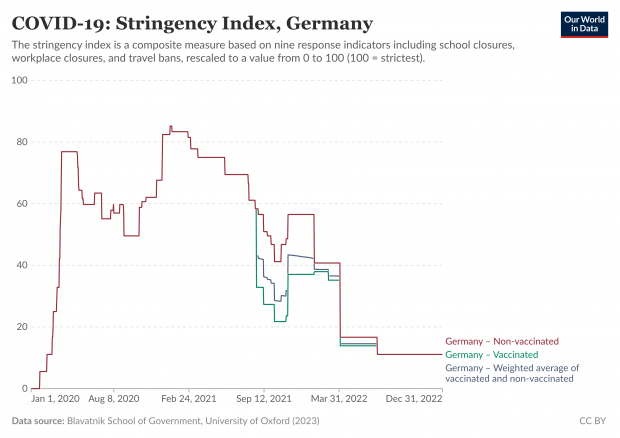Abgesehen von der verständlichen Verärgerung von Ärztinnen und Ärzte, die in Bayern nun plötzlich mit ihrer Rente die Ärztekammer finanzieren sollen, offenbart sich dabei ein eigenartiges Selbstverständnis der Kammer und ihres Präsidiums. Warum ignoriert es die Leserbriefe seiner Mitglieder (im Bayerischen Ärzteblatt 3/2025) und führt die Aufsichtsbehörde mit offensichtlich falschen Angaben in die Irre?
Juristische Fragen erscheinen mir dabei aber zweitrangig – Gerichte werden letztendlich über die Rechtmässigkeit der neuen Gebührenbescheide entscheiden. Viel bemerkenswerter ist aber der Wandel des ärztlichen Selbstbilds vom sicheren, gut bezahlten Beruf zur durchökonomisierten Dienstleistung mit Budgets und Fallpauschalen. Der einstige Zusammenhalt des Standes ist brüchig geworden. Wie früher kostenlos behandelt niemand mehr seinesgleichen. Die hippokratische Tradition, den Lehrmeister „wie die eigenen Eltern“ zu achten und den Lebensunterhalt zu teilen? Mit den neuen Kammergebühren für nicht mehr berufstätige Ärztinnen und Ärzte wird genau das Gegenteil gemacht.
Ärztekammern hatten einmal eine integrative Funktion. Heute dominiert die Zersplitterung: Klinikärzte, Niedergelassene, Angestellte, Berufsaussteiger – wessen Interessen vertritt denn diese Kammer? Offenbar vor allem ihre eigenen. Eine halbe Million Euro jährlich für den Präsidenten und seinen Vertreter muss schließlich finanziert werden. War denn die Aufstockung um 70 Mitarbeiter in den letzten zwei Jahren wirklich nötig? Schon 1955 beschrieb es Northcote Parkinson: Bürokratien wachsen unabhängig von ihrer Arbeitslast. Mehr Personal schafft neue Hierarchien, rechtfertigt sich mit internen Prozessen. Aber während Bürokraten sich am liebsten selbst verwalten, erledigt immer mehr künstliche Intelligenz Routinejobs: Buchhaltung, Terminmanagement, Verwaltung – Einsparpotenzial 30–50 % in fünf Jahren. Die Reaktion der Bayerischen Landesärztekammer? Statt einsparen mehr ausgeben. Und braucht es einen dreitägigen Ärztetag mit endlosen Reden und Kosten von 400.000 €?
„Wir evaluieren Digitalisierungsmöglichkeiten – Apps statt Papier. Ernsthaft – wer braucht noch eine weitere App? Und Stockfotos falscher Ärzte in den Kammer- Broschüren? Capgemini, Werbung für PVS holding, die activeMind AG, D-Trust…? Statt echter Reformen gibt es eine Social-Media-Offensive mit ganzen 401 YouTube-Abonnenten und 2.540 “Freunden” auf Facebook. Die meisten der kümmerlichen Follower kommen aber nicht von den 97.000 Kammermitgliedern…
Die endgültige Entscheidung über die Gebührenerhöhung steht noch aus. Aber auch so haben wir die rhetorische Nebelkerze der „Generationengerechtigkeit“ zur Kenntnis genommen und was die Bayrische Landesärztekammer darunter versteht – sie steht für Euphemismus und Verdrehung der Tatsachen. Management-Floskeln über „finanzielle Stabilität“, „zukünftige Leistungsfähigkeit“ und „veränderte Rahmenbedingungen“ verschleiern das eigentliche Problem: Die Bayerische Landesärztekammer muss nun nicht nur ihre Gebühren rechtfertigen, sondern mittlerweile auch ihre Existenz.
Denn ausgebildet und geforscht wird in der Medizin schliesslich immer noch an Universitäten. Geprüft wird in staatlichen Examen, die Approbation verleiht die Landesbehörde. Die Honorare werden privat oder über die KV erstattet. Hier werden auch die Bereitschaftsdienste organisiert, Vertragsärzte vertreten und Fortbildungen organisiert. Gerichte und Schiedsstellen berufen Gutachter von den Fakultäten oder Akademien. Der Arztausweis kommt vom Kreisverband, zusätzliche Facharzt Zertifikate könnten jederzeit auch akkreditierte medizinische Fachgesellschaften vergeben. Stammtisch und Fortbildung funktionieren alle auch ohne Landesärztekammer und ganz ohne penetrante Unterstützung von Pharmaunternehmen (“MEZIS“). Ärztliche Kreisvereine, Landesärztekammer und Bundesärztekammer, wieviel davon ist sinnlose Redunandanz?
Es kann ja jeder gerne freiwillig Kammermitglied bleiben, aber warum denn nun neuerdings Zwangsgelder nach Ende der Berufstätigkeit? So überaltert und reformunfähig wie die Kammer auftritt?
Der Autonomie der ärztlichen Selbstverwaltung muss Grenzen gezogen werden, so die frühere Aussagen des Bundesverfassungsgerichtes. Nur leider versagt die Kontrolle in Bayern, wenn das zuständige Staatsministerium auf Nachfrage nur die allseits bekannten Management Floskeln wiederholt.
weiter mit Pressespiegel
CC-BY-NC Science Surf
accessed 10.01.2026










